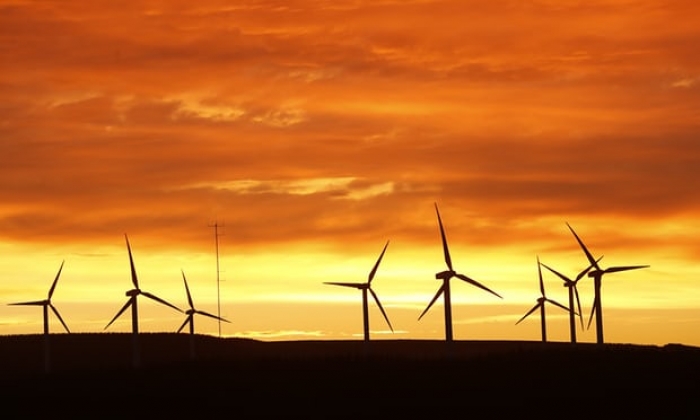Wind farms have grown more than fivefold in the last decade and plunging costs have made them a key way of reducing carbon emissions from fossil fuel burning. But in the central US, for example, the power of the wind could fall by nearly a fifth.
“We found some substantial changes in wind energy,” said Kristopher Karnauskas at the University of Colorado Boulder, US. “But it does not mean we should not invest in wind power.” It does mean such changes need to be taken into account in planning future wind farms, he said, and also in assessing how much wind farms overall can cut global emissions.
The research, published in the journal Nature Geoscience, used the same climate models and projected future emissions as the UN’s Intergovernmental Panel on Climate Change. Losses of wind energy stretched from the central US to the UK, Russia and Japan for both medium and high emissions scenarios. If emissions remain high in the future, wind energy increases were also seen a smaller number of regions.
The biggest fall was in Japan, where wind farm building is just beginning to accelerate, with wind energy projected to fall by 58kW, or about 10%. The central US was second with 49kW but because the average current winds are generally weaker than in Japan, this represents a larger 17% drop. The UK is anticipated to fall by 36kW, or 5%.
However, the wind energy in eastern Australia would jump if there is strong global warming in future. “That is the biggest increase on the whole map,” said Karnauskas. Here, wind energy would rise by 48kW, or 23%. Eastern Brazil and west Africa would also see big rises, 35% and 40% respectively.
The reason these coastal areas would see increased wind energy is that the world’s land is warming faster than the ocean and that difference is the energy source for those winds. “The more it warms, ironically, the more it increases the wind power there,” said Karnauskas.
In the northern mid-latitudes, however, the major driver of wind is the temperature difference between the Arctic and the tropics, and the Arctic is warming very rapidly, reducing that difference.
The scientists had to convert the wind speeds predicted by the climate models into wind energy, because temperature, pressure and humidity all affect the power of the wind. “More dense air is going to blow harder on a wind turbine,” said Karnauskas.
Prof Brian Hoskins, at Imperial College London, UK, and not involved in the study, said: “It is important to try to estimate how climate change is likely to influence all our activities. This is a good example.”
The new study analysed average monthly wind over broad areas and Hoskins said smaller scale changes could be more important for particular wind farms. Dave MacLeod, at the University of Oxford, said other higher resolution work had found different results in the US.
Karnauskas acknowledges the uncertainties and said the work provides a starting point for more focused work: “It points to places that need detailed studies. Until now, we were really missing a consistent global view of the issue.”
More about: #Global-Warming
















































